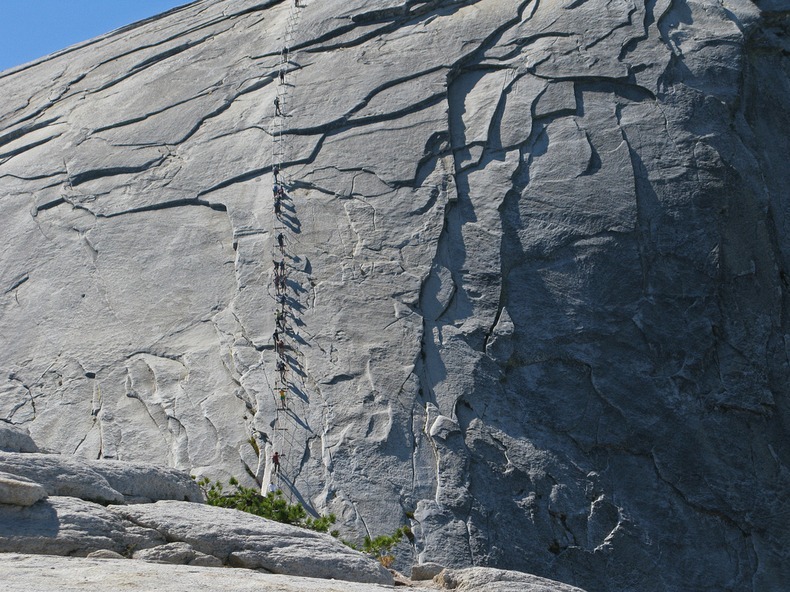
The trail starts with a 13.7 km hike, followed by a rigorous 3.2 km approach including several hundred feet of granite stairs. The final 400-foot ascent up the peak's steep but somewhat rounded east face is ascended with the aid of a pair of post-mounted braided steel cables raised on posts that lead to the breath-taking summit. This cable route was constructed close to the Anderson route in 1919 by the Sierra Club for visitors who have no rock climbing ability or equipment. Following the Half Dome Cables Trail is a unique experience, and it has become one of the most popular hikes in Yosemite National Park. As many as 1,000 hikers per day have sometimes climbed the dome on a summer weekend, and about 50,000 hikers climb it every year.
The top of Half Dome is a large, flat area where climbers can relax and enjoy their accomplishment. The summit offers views of the surrounding areas, including Little Yosemite Valley and the Valley Floor. A notable location to one side of Half Dome is the "Diving Board," where Ansel Adams took his photograph, "Monolith, The Face of Half Dome" on April 10, 1927. Often confused with "The Visor," a small overhanging ledge at the summit, the Diving Board is on the shoulder of Half Dome.
Even with support from hand rails, climbing the sheer vertical face of the Half Dome is a risky business. Since 1919, there have been six fatal falls from the trail to the top. Injuries are not uncommon for those acting irresponsibly.














Ansel Adams’ famous photograph, "Monolith, The Face of Half Dome"
Source
